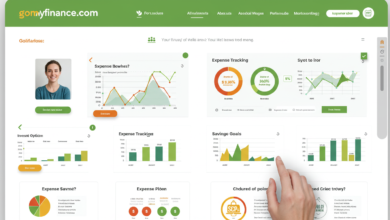
Financial market engagement has never been more accessible, and the same can be said of information on markets in asset classes such as stocks, currencies, and cryptocurrency. Those who are interested can now access these markets via apps on a smartphone, and there’s no shortage of information online about how the markets work. At IM Academy, an online education platform, the goal is to distill this onslaught of information and equip students with digital tools and a well-informed mindset for analyzing market charts.
Some of the most common market engagement strategies are day trading, swing trading, scalping, and position trading. Essentially, these strategies are differentiated by the time frames over which they occur, with some involving hundreds of trades per day and others requiring a much longer-term position of weeks, months, or even years.
IM Academy students primarily study the short to intermediate approaches: Scalping and Swing Strategies.
Scalping Versus Swing Strategies
Scalping involves making several exchanges throughout a single day, a process known as an intraday approach. Market participants who follow a scalping strategy need to closely monitor small market movements and may hold assets for as little as seconds. The goal is to compile a series of small gains off several quick exchanges, often hundreds over the course of a single day. Ideally, this minimizes the risk of overcommitting to a position, but it requires careful, sustained analysis of market movement at time scales as fine-grained as minutes, seconds, and hours.
Swing Strategies involve intermediate time scales, usually days or weeks. Like scalping, the goal is to assess the highs and lows of market activity to time entry and exit points, but the difference is that the time scale is longer. This means the participant must be more patient in waiting for high and low points. The upside is that a swing trading approach requires less nuanced and time-consuming monitoring of chart movement, but participants potentially take on more risk because of the more long-term commitment of the position.
At IM Academy, students study both of these approaches across a range of different academies dedicated to several financial markets, including foreign exchange, digital currencies, and stocks and futures.
Studying Markets at IM Academy
Different IM Academy students have different preferences for market engagement styles, with various approaches to time-based and pattern-based strategies. Some students may prefer a more fast-paced, intraday approach to analysis and thus study through the TBX Academy, which foregrounds scalping.
Students can also learn scalping with an in-depth approach to specific markets at IM Academy’s FRX Academy for foreign exchange, DCX Academy for digital currencies, or SFX Academy for stocks and futures markets. Those who favor a more intermediate time scale can study swing strategies at these academies as well.
According to a recent post on IM Academy’s Twitter account, SFX is particularly well suited for a more long-term approach. The Academy tweeted: “SFX Academy is excellent for students … who are OK with learning something that will take time.”
Each academy includes prerecorded video lectures, readings, and opportunities for live mentorship with IM Academy educators through GoLive online discussions. These discussions allow students to talk over their preferred strategies with educators, as well as study the processes that educators prefer. Topics covered in the asynchronous materials range from beginner basics for each market and strategy to advanced mathematical techniques for chart analysis, including Fibonacci retracement and Elliot waves. These techniques apply ratios to chart activity to analyze peaks and valleys of market activity.
To facilitate this sort of chart analysis, IM Academy also provides market trackers and apps. The apps offer strategic suggestions to a user’s smartphone based on strategies such as scalping or swing.
In 2022, the academy released its “IMpowered Market Tracker”, which uses proprietary technology to analyze over 50 market variables and present a user with a visualization of market momentum and direction. Students can analyze this straightforward presentation of market movement at their preferred time to get a sense of how diverse markets are moving and to study how their preferred strategies are relating to this movement.
The key for IM Academy students is to study the tools needed to interpret market charts and determine which engagement style best fits with their individual preferences. Some students prefer to focus on a single strategy, while others prefer a mix spread across assorted markets — for example, scalping in crypto while using a swing strategy in the stock market.
As Christopher Terry, IM Mastery Academy CEO, explained in a recent YouTube video, a market participant should develop their own approach built on a foundation of knowledge and self-understanding.
“When you do anything, any business, anything, a plan is necessary. When you’re looking at the markets, you have to have a game plan. I look at some people, they look at just Elliot waves. I look at some people, they look at just market profile. I look at some people, they look at stochastics,” said Terry. “You have to have your own model. You pick from here, you pick from there, and you make it your own. So, you always want to always seek new information and grow.”
Follow their Twitter page on https://twitter.com/mastery_im, to learn more.
Note: IM Mastery Academy is not an advisory or broker service. IM Mastery Academy provides online educational services only.



